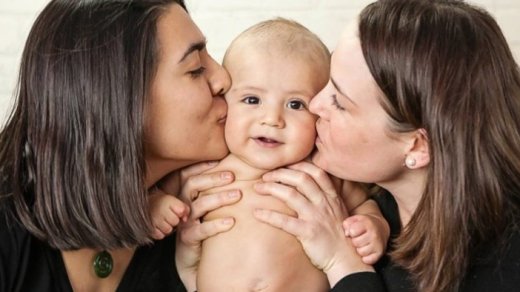What the research shows
A research team analyzed the records of nearly one million women in Sweden’s national medical registries from 2001 to 2017, comparing 86,551 women who had perinatal depression with 865,510 women who did not. The groups were matched by age and year of birth.
In two studies, the team found that depression that begins during pregnancy or soon after can have worrying implications for up to 18 years.
A study, published Tuesday in JAMA Network Open, found that women with perinatal depression had three times the risk of suicidal behavior, defined as attempted suicide or completed suicide, than women who did not experience perinatal depression. The risks were highest in the year after diagnosis, but although they decreased over time, years later the risks were still twice as high compared to women without the disorder.
The other study, published Wednesday in BMJ, found that women with perinatal depression had more than six times the risk of dying by suicide than those without that diagnosis. The number of suicides was small, but it accounted for a large proportion of the deaths of women diagnosed with perinatal depression: 149 of the 522 deaths in that group, or 28.5 percent. For women without perinatal depression, there were 117 suicides out of 1,568 deaths or 7.5 percent.
Suicide was one of the main reasons why women with perinatal depression were twice as likely to die from any cause during the 18-year study period compared to women without the disorder.
The researchers also compared more than 20,000 women with perinatal depression to their biological sisters who gave birth during the same period and did not have the disorder. The risk of suicidal behavior for sisters with perinatal depression was almost three times higher than that of their sisters without the diagnosis, almost as high as the difference between women with the illness and those without it to whom they were not related. That suggests that depression plays a bigger role in these results than genetics or childhood environment, the researchers wrote.
Behind the numbers
The average age at which women experienced perinatal depression was 31 years. They were more likely than those without the disease to live alone, have a lower income and less formal education, have recently smoked and have not given birth before, among other characteristics. the researchers reported.
They were also more likely to have had previous psychiatric disorders or suicidal behavior. But the studies found that, regardless of whether women had other mental health problems, perinatal depression increased the risk of suicidal behavior and death. That suggests that pregnancy-related depression may be different and more serious than other mental health disorders.
“This highlights the pressing need for careful clinical follow-up and rapid intervention for this vulnerable population to prevent such devastating outcomes, regardless of history of pre-pregnancy psychiatric disorders,” the JAMA Open Network study concluded.
There may be differences in the experience of women who develop depression during pregnancy (just over half of those in the study) and those with postpartum depression that emerges within a year of giving birth. The researchers found that women with postpartum depression had a higher risk of suicidal behavior and death, but it was not clear why.
The data did not find that pregnancy complications or birth weight or gestational age of the newborn affected maternal suicidal behavior.
More to learn
It is estimated that perinatal depression affects 10 to 20 percent of women during or shortly after pregnancy, remains understudied, undertreated, and probably underdiagnosed. Some reports have suggested that the disorder became even more common during the coronavirus pandemic due to social isolation and reduced access to care.
While new studies shed some light on the effects of perinatal depression, many questions remain. For example, the researchers said they could not capture factors such as domestic violence or alcohol use. And the studies may not be representative of the experiences of other countries, since, for example, most women in the Swedish registries were white and Sweden is relatively rich in universal health care.
The role of treatment and therapy is not yet fully understood. The studies classified women as having perinatal depression if doctors gave them that diagnosis or if they had filled prescriptions for antidepressants during pregnancy or a year later, indicating that they received some treatment. For those without treatment or therapy, the consequences could be magnified.
If you are having suicidal thoughts, call or text 988 to reach the 988 Suicide and Crisis Lifeline or visit SpeakingOfSuicide.com/resources for a list of additional resources. Go here to obtain resources outside the United States.



